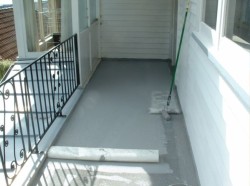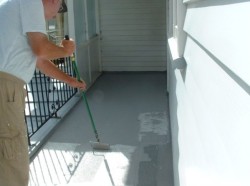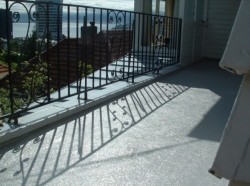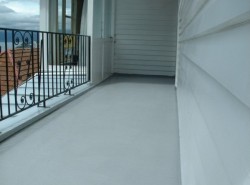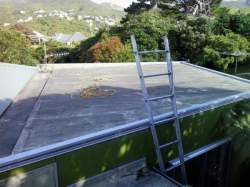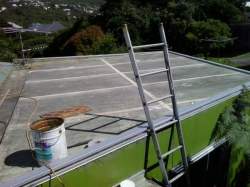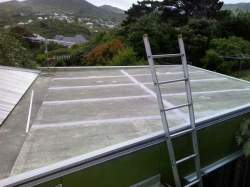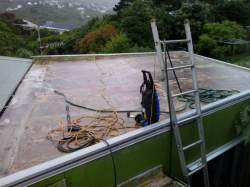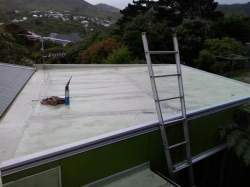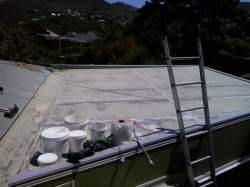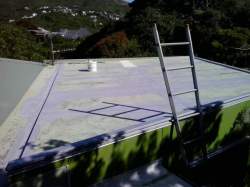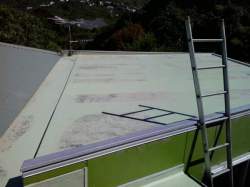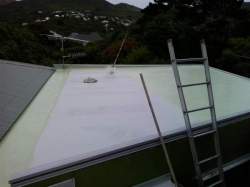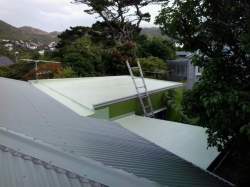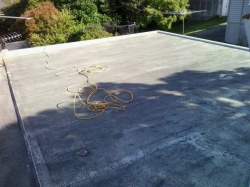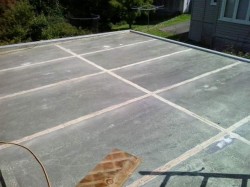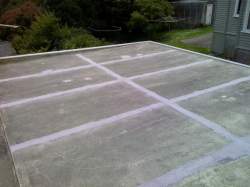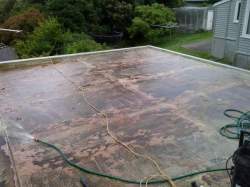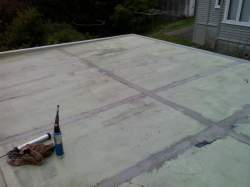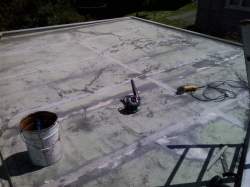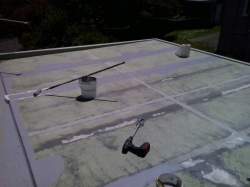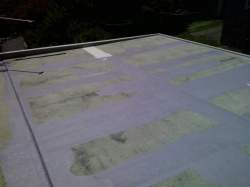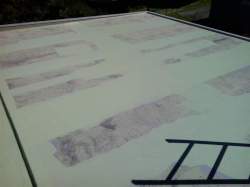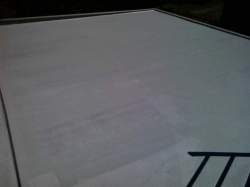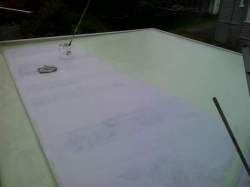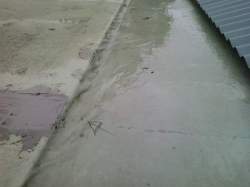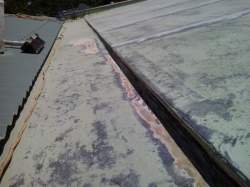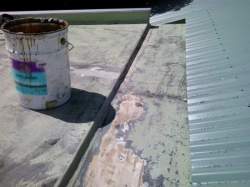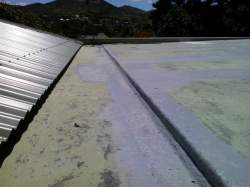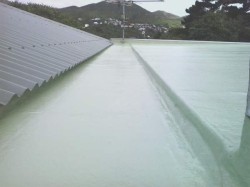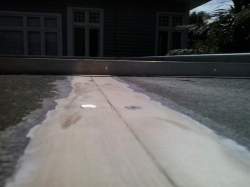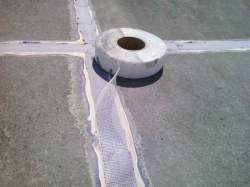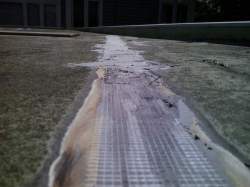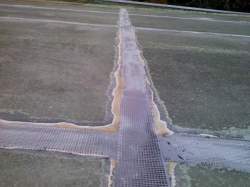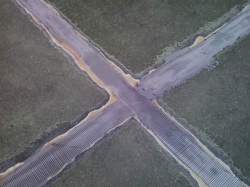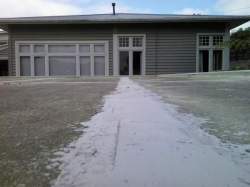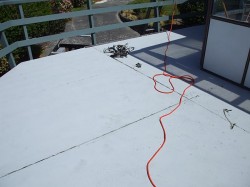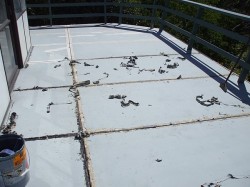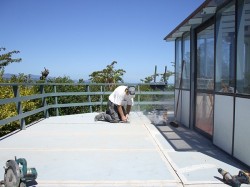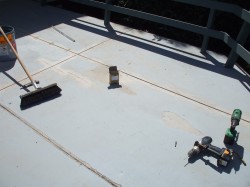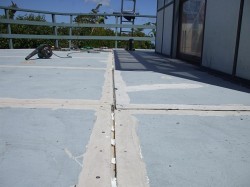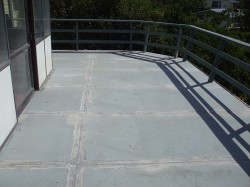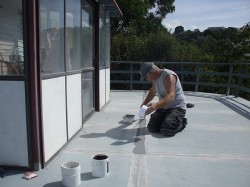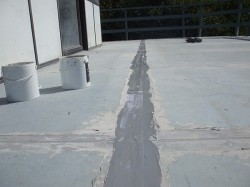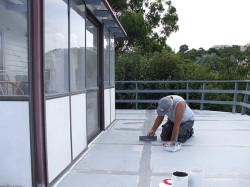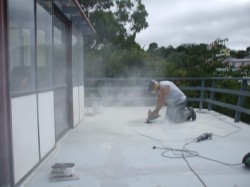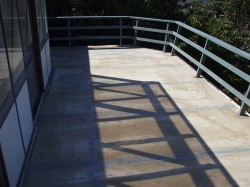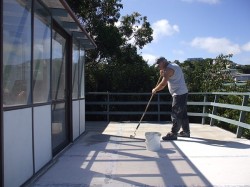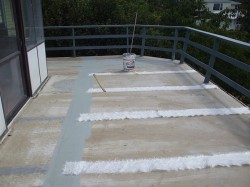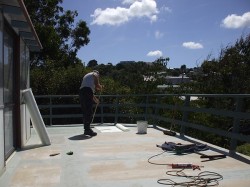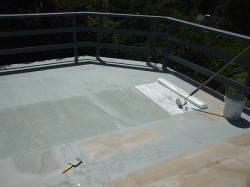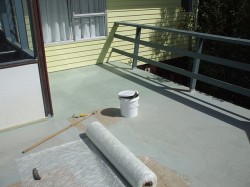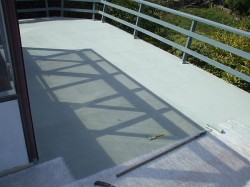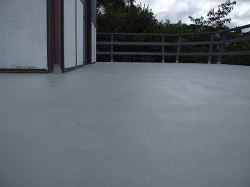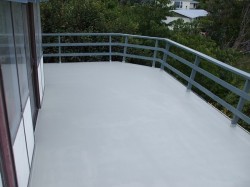All roof and deck membranes have a propensity to show movement on plywood substrates. This is exibited as “tenting” or “ridging”, a peak in the membrane above the plywood joins. With Traffigard Fibreglass, which is quite a hard membrane, designed to be walked on in a deck situation, these ridges can over time, due to expansion and contraction of the plywood split open, allowing water to enter through to the substrate.
It is part of the Traffigard System specification that regular inspections are made and any untoward excessive movement in the substrate which causes ridging or wrinkling of the Traffigard is attended to. It is recommended that a recoat is done every 7 years, sometimes less if heavily trafficked, and at the same time to attend to any tenting, ridging or winkling of the fibreglass reinforcement.
We refer to this as a “tune-up”
An example of a basic tuneup is shown below, in this case a small roof.
hover cursor over image for text description, click on image for larger size image (opens in new tab)
Overview of Process
Process again, closer view
Gutter Repairs
Plywood Joint Reinforcement
Repair and new Traffigard Lamination
A further upgrade is available, which involves adding another layer of fibreglass lamination, on top of the joint repair process mentioned above. The specification as follows;
Bodycoat: Apply Hitchins’ Traffigard Primer Bodycoat undiluted at 2m2/L, immediately followed by embedding in 300 gsm Chopped Strand Fibreglass Mat (side edges frayed) and wet out fibreglass with more Hitchins’ Traffigard Primer Bodycoat. Leave to dry.
Traffigard membrane is to be flashed up walls and parapets minimum of 150mm, or where cladding or doors cannot be removed, to maximum height possible.
Fill coat: Sand, sweep and apply a further coat of Hitchins’ Traffigard Primer Bodycoat undiluted at 3.5m2/L. Allow to dry for a minimum of 4 hours, depending on temperature and humidity.
Top Coat: Selected Traffigard Top coat or Unisheild 3 part epoxy Topcoat to colour of choice.
An example of a Tune-up incl. new Traffigard Lamination is shown below. This deck over a garage is of Hardies cement sheet, which had the joints filled with sealant, and the sheets coated with a hard paving paint.
hover cursor over image for text description, click on image for larger size image (opens in new tab)
Another example of a simple overlay lamination
hover cursor over image for text description, click on image for larger size image (opens in new tab)
